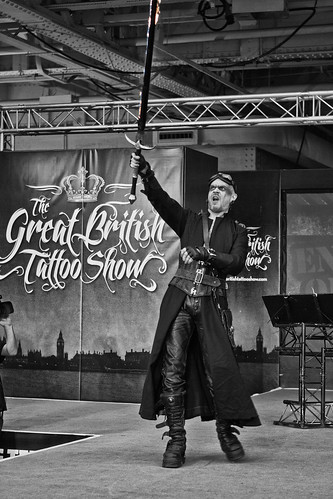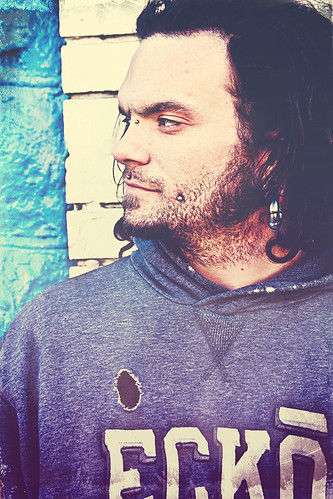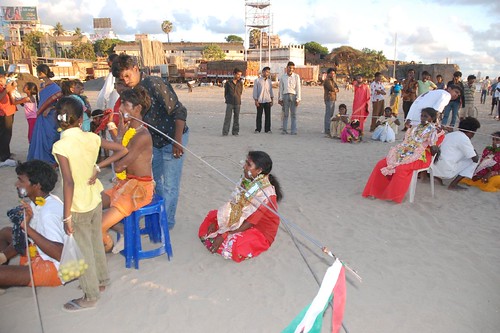What are the Real Risks of Body Piercing? -- advice for Parents & Teens

Are you or your teenager considering a body piercing? Is it difficult to see eye-to-eye on this subject, or are you just not sure what the real risks of body piercing are? Sometimes it's hard to detach the facts from the myths surrounding body modification. When that happens, it can make it even harder for parents and teenagers to come to an business agreement on whether a body piercing is an acceptable form of self-expression.
First, you should understand that the risks of body piercing are very real. There are genuine problems that can and do arise, and these shouldn't be ignored. On the other hand, by taking confident precautions and taking allowable care of your piercings, you can minimize your occasion of having a problem and greatly increase the chances that you will be one of the millions of citizen who will end up with a healthy, general piercing.
What are the health risks of body piercing?
Infection. Without allowable care, infection can lead to scarring and even blood poisoning. Infections of piercings are unattractive and can be very dangerous. Allergic Reaction. Some citizen are sensitive to confident metals and only study this when they are pierced and have a severe reaction to the jewelry. The rash, swelling, and difficulty breathing can lead to shock and hospitalization. Nerve Damage. If a piercing isn't placed carefully, it can be pushed through a nerve, severing it and manufacture the surrounding area constantly deadened to any feeling. Excessive Bleeding. This is just what it sounds like. If you get pierced and happen to hit a large blood vessel, you could have difficulty stopping the bleeding and may end up in the crisis room getting it cauterized. Not pretty. Risk of Cross-Contamination. You may come to be cross-contaminated by Hepatitis, the Hiv virus, or other blood-borne pathogen is you are pierced by improperly sterilized needles. Keloids. These are toughened knots of scar tissue that look like cysts at the base of a piercing that sometimes form for no presume at the site of a piercing. Can't donate blood. Is it leading for you to be a blood donor? Is there person in your house who is ill and may need blood donations in the near future? Don't get pierced. You cannot donate blood for one year after getting pierced -- no exceptions. Dental Risks. There are any problems that can arise from oral piercings, together with chipped teeth, worn tooth enamel, damage to the gums and jaw line from wear, and even aspiration (inhaling) of a loose piece of jewelry into the lungs. Infection and swelling of the tongue is also a possibility, and is very unpleasant.
Are there other body piercing risks?
It depends on what you reconsider a risk. There are really things you should reconsider that you could call potential drawbacks to getting pierced. Among these are:
Pain. How much of a weenie are you? If you can't tolerate pain, you may be risking suffering more than you like for your vanity. Some piercings hardly hurt at all, others can be pretty rough for a few weeks. Cost. Do you have the money to pay not only for the piercing and jewelry, but for the aftercare products, such as Provon® or Satin® and H2Ocean®? Commitment. You are putting yourself at risk if you can't clean your piercing every day, twice a day. Period. End of discussion. And you have to do your sea salt soaks or H2Ocean® treatments without fail. Judgment of Others. Let's get real. You may not want to hear this one, but face it; others may judge you based on your piercings, so really think this one through. Will it bother you if others stare as though they are afraid of you? Do you want to have to by comparison yourself or remove your piercing for job interviews? Will you feel badly if your piercing upsets your grandparents or house friends?
Okay, we've looked at the risks of body piercing, and you (or your teenager) are still confident that a piercing is a "must have." How do you forestall all of those scary possibilities we mentioned in our list of health risks? By doing your homework! A good piercing with a low risk of infection or other complications is the corollary of choosing a good, expert piercer and having the piercing done in the allowable environment.
What should you look for in a piercing parlor that will sell out the risks of body piercing?
First impressions count! When you walk in the door, scan the waiting area. Is it clean, neat and expert looking? If the front of the shop isn't clean, it's a sure thing that they can't keep the back area clean. If you first impression makes you wary, turn around and walk out the door.
Credentials
Check to make sure they are licensed by the local board of health to control as a piercing studio, and make sure their license hasn't expired. Also look for membership in a recognized group such as the association of expert Piercers (App), which sets high standards for membership and requires comprehensive training. An App certification will indicate that the piercers have taken classes and been through a faithful apprenticeship program.
Helpful, Knowledgeable Staff
Ask questions, and lots of them. If the employees don't know the answers and are more like sales clerks pushing jewelry than anything, you should be wary. They may have a high turn-over of staff for some reason; this is also a red flag. If, however, they can reply your piercing questions and give you good, clear advice, then they have been well-trained by person with experience.
The one irregularity may be if the studio is very large and they have a few sales citizen who only work the front counters. If this is the case and you begin asking questions, they should reply really that they are salespeople, and be willing to refer you to a piercer or apprentice who can discuss your concerns with you. There should always be a piercer on location at the studio or parlor when it is open -- always.
Printed information
Ask to see the aftercare facts they supply to individuals getting pierced. If you hear, "Oh, your piercer will by comparison all that to you," insist on looking the printed version before getting pierced. If they don't have printed, step-by-step instructions, walk away. It is too easy to forget what you need to do, forget the name of the stock you should be using, etc. If you don't have printed instructions. If they aren't willing to spend the money to print the instructions for their clients, who knows where else they might be cutting corners!
Read through the aftercare instructions and see if they are current with the prevailing standards. A good way to value this is by checking them against what you see on sites such as Bme, Tribalectic and App. If the piercing literature still recommends using alcohol or hydrogen peroxide, for instance, to clean your piercing, then the studio is not retention up with the current study in body piercing care and may cause you unnecessary suffering and longer medical times.
The rules are there for a reason
If you're a teenager and they don't ask for I.D. Or tell you to come back with a parent or guardian, do not thank your lucky stars. Leave! The law says your parent has to be present, and any studio that bends or breaks the rules on one issue will do the same on others.
In other words, if they are willing to "ignore" one rule to grab your money, they will ignore others to turn a higher profit. They may rule that the cost of an autoclave is unnecessary, or that reusing piercing needles is a great way to save some money. You are a minor and have little or no safety without your parents present, and they know this -- that's why they do it -- to take benefit of you, pure and simple. If you are going to get pierced, make sure you take a parent or guardian with you for your own safety. If they've been cool sufficient to get this far with you, they'll survive going to a piercing parlor, trust me.
The rest of the place
We've made it past the waiting room and decided that the piercing parlor seems okay so far; they have current credentials and health certificates, their aftercare instructions look good, and they had Dad sign a consent form. Are we ready to go? Not yet. You still need to check a few more things. Don't be afraid to request them about the piercing room and the sterilization process itself. These are two of the most leading things to consider.
Ask these questions before ever getting pierced:
Do you sterilize your tools in an autoclave? May I see your most new spore test results? If they don't do spore testing at least once a month, don't get pierced there. Spore testing is the only way to know if an autoclave is effectively sterilizing the equipment, and autoclave sterilization is the only method stylish by the association of expert Piercers. How long have you been piercing, and how did you learn? Body piercing is complex, and any piercer who is a expert will gladly by comparison where he learned and from whom. It takes quite a while to learn what types of jewelry and needles are best for each piercing and to learn how to place the piercings optimally. If a piercer seems defensive or less than forthcoming, be hesitant to let him touch you with a needle. May I see the room where you'll be doing the piercing, and can I watch you set up? Check out the area where the piercings are done. Do they wipe down the area before and after every piercing? Do they articulate a clean, dust free environment at all times? When setting up, make sure that the sterilized instruments are put on a tray and not touched except with washed, gloved hands. Make sure the piercer uses gloves for the entire piercing and changes them frequently. What type of piercing needles do you use? There is only one strict answer: Single-use, pre-sterilized, disposable needles. These should not be opened except in your proximity at the time of the piercing. If they use a piercing gun for any piercing, leave immediately. No body piercing should ever be done with a piercing gun, which causes bruising, trauma and excessive tearing and bleeding.
"I've chosen the parlor and piercer and I got a really cool body piercing. Now what?"
Aftercare!!! There is nothing as crucial to addressing the risks of body piercing as properly following the guidelines for piercing aftercare. Since you've chosen a reliable, expert piercer, you will have a set of aftercare instructions that will tell you what to do to properly care for your piercings.
Do not skip a day because you are too tired, too busy, or because you "forget." Aftercare is really deterrent care -- you are taking care of your piercing in order to forestall an infection and to enable the wound to heal properly. While following your aftercare instructions, watch for signs of issue so that you can address them early on before they turn into real problems.
Signs of a potential problem that you should bring to the concentration of your parents (if you are a minor) or your piercer are:
Discharge that is green or yellow from the piercing Splitting, oozing or cracking and bleeding of a piercing more than a week old Swelling and flush after the first few days Pain and flush or red streaks radiating out from the piercing Migration (movement of the piercing) up through the layers of skin Difficulty breathing and swelling of the tongue within hours of a piercing, especially an oral piercing A rash or hives soon after a piercing A lump or bump forming at the base of the piercing
In some cases, you will need to see a doctor; in others your piercer will be able to advise you on the allowable steps to alleviate the situation. The leading thing is to catch any small problems before they turn into big ones. If you corollary your aftercare instructions and monitor your piercing carefully, you can minimize the risks of body piercing so that you can enjoy your new body piercing completely!
This record "What are the Real Risks of Body Piercing?" reprinted with permission.
Copyright © 2004 Evaluseek Publishing.


















